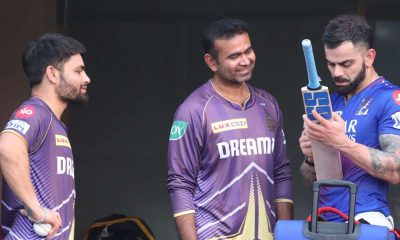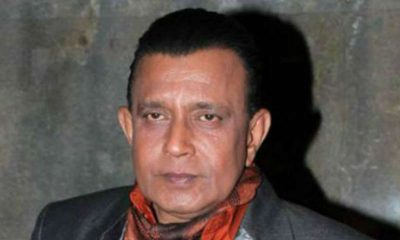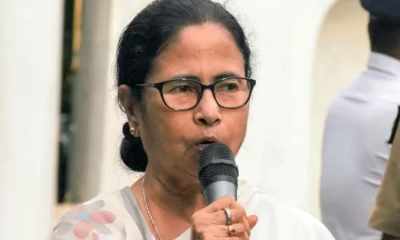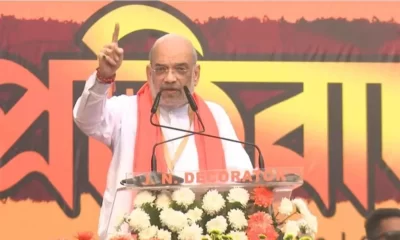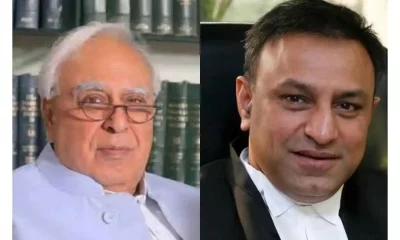India News
He Was, By All Accounts, The Last Of The Gentlemen Editors
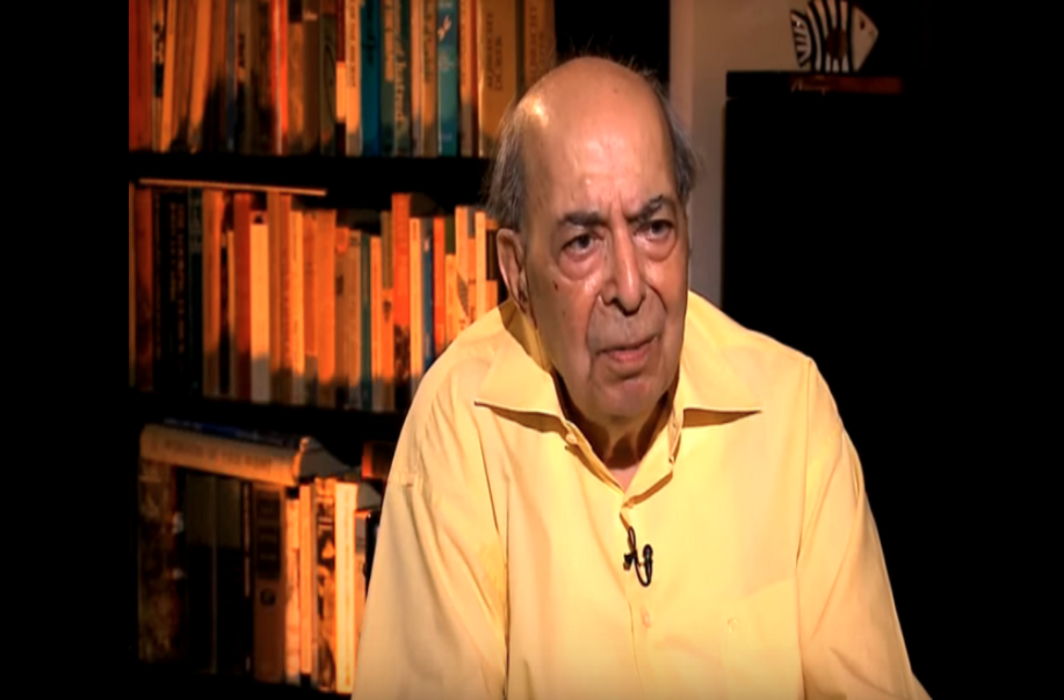
~By Saeed Naqvi
These are such desperate times for journalism that S. Nihal Singh’s departure at 89, triggers memories about a phase in the profession that dreams are made of.
My personal journalistic trajectory trailed his rather closely. He was The Statesman’s Special Correspondent in Singapore when I entered the portals of that once great newspaper as a cub reporter.
I was, in fact, following Nihal’s footsteps because this was how he entered the profession a decade earlier – as a cub reporter. There were no schools of journalism then, but we received training of exactly the thoroughness which our respective letters of appointment had promised:
“We do not guarantee you employment at the end of the six month training period, but the training you will have received here will enable you to find work elsewhere.” It remained something of a puzzle why the pocket money Nihal was offered during the training period was infinitely higher than mine which was a meagre Rs.300 per month.
Like most of us who entered the profession after him, Nihal covered New Delhi courts, Tis Hazari courts, Municipal Corporation, Delhi State Assembly, Police Commissioner, Chief Minister. The drill of dwelling on nodal points of governance and power, moving upwards in measured step, imparted to the journalist that most precious of attitudes: an indifference to power, an ability not to be overawed.
As the profession expanded behavioural contrasts magnified. Untrained entrants at senior levels, who had romanticized political power from a distance, became unsteady on their feet because they found corridors of power too heady. A sense of balance was a frequent casualty.
This is where Nihal could not go wrong. In 1982, when the nation was convulsed by the Meenakshipuram conversions, Nihal, then Editor-in-Chief of the Indian Express, sent a teleprinter message to me in Madras where I was then posted as editor of five southern editions: “urgently need 700 words on Meenakshipuram.”
I put on my ultra-balanced hat and churned out the required wordage. It was a typical “while on the one hand” but “on the other” piece. Muslims shouldn’t be upto these tricks and Hindus shouldn’t get too excited. I mentioned “structural violence” in the Hindu social order: this was sacriledge and Nihal let it pass. Unaware of the gathering storm, he thanked me for having responded promptly.
What followed took him and me by surprise. We were both completely out of touch with the strength of feelings on the issue. Indeed, a certain indifference to religion which a whole generation cultivated as Nehruvian secularism was being jettisoned and we found ourselves flat footed.
After a brilliant career with the IAS and having established himself as a scholar of the Indus Valley script, Iravatham Mahadevan, had taken up a job as Executive Manager of the Indian Express’s southern editions. After reading my edit, he came charging to my room in a state of high agitation. “How could you have done it?” He looked at me in a daze, blabbering like someone in a motor accident. “How could you have done it?” I learnt later he was from the RSS, shakhas et al. I commend to the RSS to keep more Mahadevans in its stable. He was exceptionally erudite on subjects of his choice.
In the Express compound, in Hick’s bungalow, Ramnath Goenka was bringing the ceiling down: “Hindu Kahan Javey?” (Where should the Hindus go?) “Tum to Makkay chale jaao; Hindu kahan javey?” (You can go to Mecca, but where should the Hindu go?)
He commandeered his chartered accountant, S. Gurumurthy, senior RSS functionary, to write a rejoinder to my editorial. My “balanced” approach to Meenakshipuram, it transpired, was misplaced.
It was now Nihal’s turn to face the music. The piece, authored by Gurumurthy, arrived at his desk in New Delhi. His job as Editor was on the line. What should he do? But Nihal did what he had learnt in The Statesman. In a newspaper, the prerogative for taking editorial decision rests with the editor. He consigned the article to the waste paper basket. Ramnath Goenka too was a larger than life publisher. He allowed his Editor’s line to prevail. But separation was clearly on the cards; they belonged to different cultures.
So did S. Mulgaonkar “apparently” belong to another culture but he was both, a craftier man and a finer writer. In the projection of his image, Mulgaonkar was exactly Nihal’s opposite. Never having been to school, Mulgaonkar cultivated all the airs of English aristocracy. He was adept at bridge, horse racing, angling, and, believe it or not, keeping Oxford and Cambridge cricket scores. He was a gourmet cook, a fad for which he cultivated junior French diplomats as sources for herbs and white wine. All of this impressed the Marwari in RNG. Once an editor, devoted to the amber stuff, looked at his watch and dropped an obvious hint: “I suppose I will not get a drink here.” Pat came the reply from RNG “I keep, but only for English people.”
Nihal had no aristocratic pretenses of a Mulgaonkar. He was content with his buffalo undercut, marinated in garlic and pepper, roast potatoes and Dujon mustard on the side. He called it beef fillet. The Dujon, rather than English mustard was in deference to his warm hearted Dutch wife, Ge. He had first come to know her when she was a young KLM hostess. I remember him flaunt his European affiliation before friends in London: “I prefer the continent”, he would say with a sort of flat, ineffective pomp.
His understanding of politics and International affairs was uncomplicated. He made up in clarity what he lacked in deep insight. He was, by habit, a perfect gentleman.
It was a mistake, I believe, for both Pran Chopra and Nihal Singh to be parked respectively in Kolkata as editors of The Statesman. The only Punjabi that Bengal has ever tolerated was K.L. Sehgal in New Theatre cinema. This elicited no more than a smile from Nihal.
India News
Senior Advocates Kapil Sibal, Pradeep Rai to contest for SCBA President
The SCBA elections will be held on May 16 from 10 am to 5 pm. Voters will choose the President, Vice President, Secretary, and Treasurer. The last date for filing nomination is May 9.
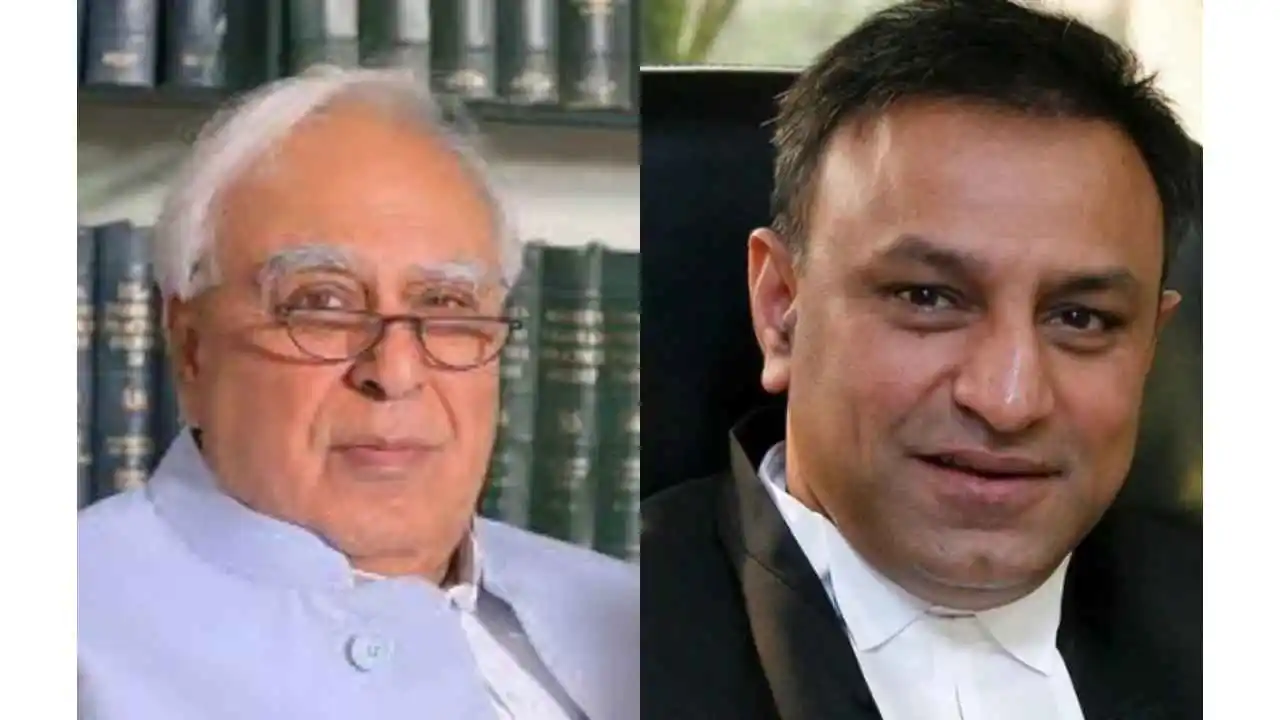
Senior Advocate Kapil Sibal has entered the contest for the post of President, Supreme Court Bar Association by filing his nomination for the elections scheduled on May 16. He will contest against Senior Advocate Pradeep Rai, who was Vice-President, SCBA for 2021-22 and 2022-2023.
Sibal returns to the SCBA electoral arena after over 20 years since he held the president’s post last. Sibal had held the post thrice between 1995 and 2002. Kapil Sibal, who served as the Additional Solicitor General of India during 1989–90, joined the bar in 1972 and was designated a Senior Advocate in 1983.
Sibal became an MP for the Congress from Chandni Chowk in Delhi in 2004 and entered the Manmohan Singh Cabinet and continued to serve in both UPA governments.
Senior Advocate Pradeep Rai has over 25 years of standing at the Bar in the Supreme Court of India, various High Courts, Commissions, Regulatory Bodies and Tribunals. He has litigation experience across a wide spectrum of civil, criminal, revenue and constitutional issues. During his two terms as Vice-President, SCBA, Rai founded various sub-committees of the Supreme Court Bar Association, including Grievance Committee, E-Committee, Health Committee, Bar Coordination Committee, Culture Committee and State Sub-Committee.
Senior Advocate Rai launched several schemes in the interest of the Bar including discounted travel scheme, affordable housing scheme, free medical facilities, academic-professional excellence and training programmes and free FastTag scheme for members of the Bar.
Incumbent SCBA President Senior Advocate Adish Aggarwala is standing for re-election. Apart from Sibal, Rai and Aggarwala, Senior Advocate Priya Hingorani and Senior Advocate Dushyant Dave are also in the fray.
The SCBA elections will be held on May 16 from 10 am to 5 pm. Voters will choose the President, Vice President, Secretary, and Treasurer. The last date for filing nomination is May 9. As per an SCBA circular, a draft of the list of candidates will be displayed on the notice board and on SCBA’s website on May 10.
The final list of nominations will be displayed on the SCBA notice board and its website on May 12. Following this, a debate will be held in the Supreme Court lawns between the candidates for the posts of President and Hony Secretary. Votes will be counted on May 18, Saturday.
India News
Karnataka Police sends notice to JP Nadda, Amit Malviya over BJP’s controversial post targeting against Rahul Gandhi
BJP leaders JP Nadda and Amit Malviya have been given one week time to appear before the Bengaluru Police
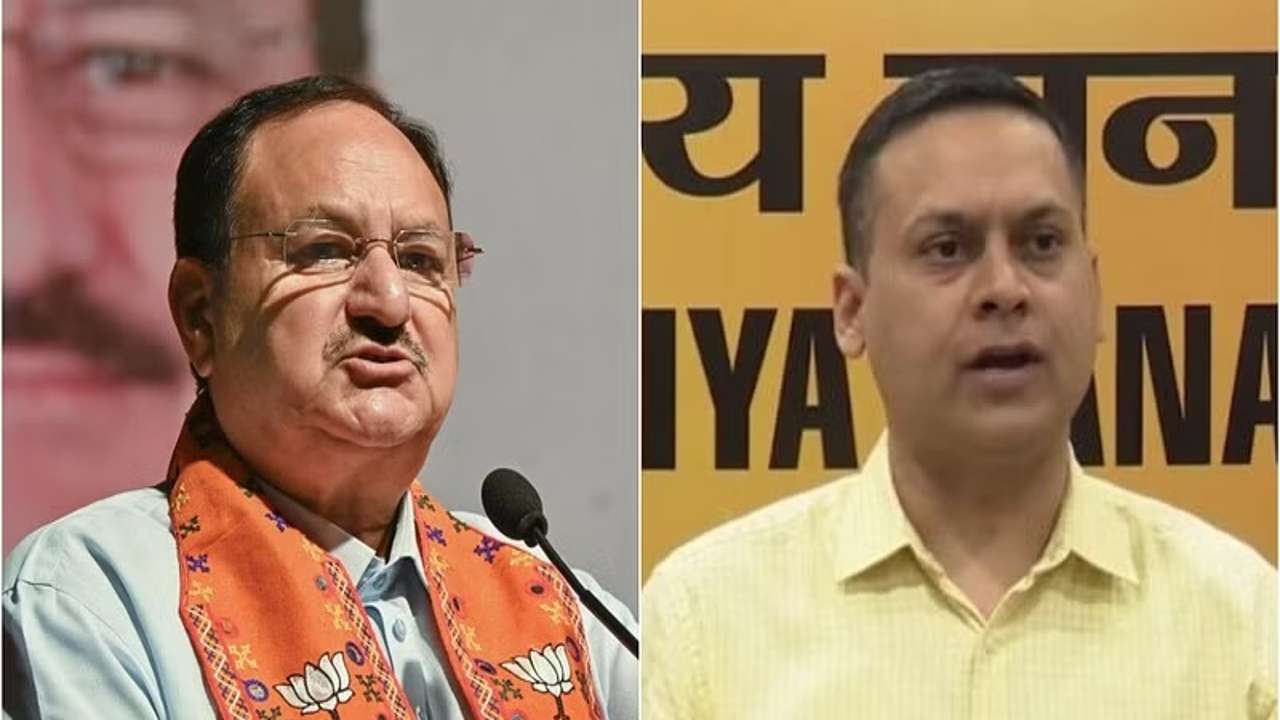
The Bengaluru Police have called BJP President JP Nadda and the party’s IT Cell chief Amit Malviya, in response to a objectionable post published by the party’s Karnataka branch. The Highgrounds Police Investigating Officer in Bengaluru sent a notice to the leaders on Wednesday.
In relation to the video, JP Nadda and Amit Malviya have been granted a week to appear before the Bengaluru Police.
Karnataka Home Minister G Parameshwara claimed the social media post amounted to assaulting specific laws against communal divisions when questioned about the police summons given to the BJP officials.
Once they (Nadda and Malviya) come and give a statement or justify their statement, we will see what needs to be taken, he said.
This comes a day after the Election Commission ordered the microblogging platform X to remove the tweet uploaded by the BJP’s Karnataka branch as soon as possible.
The letter by poll panel read that they are instructed to notify them that the post titled BJP4Karnataka violates the current legal framework. Regarding the situation, a FIR has already been filed. This further brings to your attention that on May 5, 2024, X was given a directive by the Chief Electoral Officer of Karnataka, via the Cyber Crime Division in Bengaluru, to remove the offensive message. However, the post has not been removed yet, the statement added.
Earlier, a police complaint was filed against them and BJP Karnataka unit president BY Vijayendra for sharing a video on social media that appeared to show the Congress giving preference to Muslims in matters of reservation.
The Karnataka BJP released a video in which state Chief Minister Siddaramaiah and Congressman Rahul Gandhi are shown giving Muslims more money than they are giving to SCs, STs, and OBCs.
Meanwhile, voting in Karnataka completed yesterday, in the fourth phase of polling. The results of the election will be announced on June 4.
2024 Lok Sabha Elections
BJP calls Sam Pitroda’s controversial remarks racist, targets Rahul Gandhi
Chairman of Indian Overseas Congress, Sam Pitroda sparked controversy with remarks on India’s diversity, comparing appearances of people in different regions. BJP criticised Pitroda’s comments as racist and divisive and called for his removal.

Indian Overseas Congress Chairman, Sam Pitroda, has sparked a controversy with his statement in which he said that people in the South India look like Africans, those in the East resemble Chinese, and those in the West resemble Arabs. The BJP has slammed Pitroda over his controversial remarks.
Assam Chief Minister and BJP leader Himanta Biswa Sarma slammed Pitroda for his controversial remarks and said he is from the North East and he looks like an Indian. He added that India is a diverse country where everyone may look different but everybody is one. He advised the Congress leader to understand a little about India.
BJP spokesperson Shehzad Poonawalla also criticized Sam Pitroda and said that these were racist comments by a man who is the guru of Rahul Gandhi. He said it is the words and thinking of Rahul Gandhi only because these days Rahul is also playing the politics of divide and rule to such an extent that first they divide on caste and language lines and now they are doing Indians Vs Indians.
Poonawalla further added that to make comments like Indians are like Chinese shows Pitroda’s racist mindset which is insulting to the very idea of India. The BJP spokesperson said such racist comments by the Congress leader show that Congress’ Mohabbat ki dukaan actually has Nafrat ka saaman. He said that unless Congress gives a complete explanation and sacks Sam Pitroda, such controversial remarks should be taken as the statement of the Congress.
BJPs Mandi Lok Sabha seat candidate Kangana Ranaut slammed the Congress leader for his racist remarks and said, Sam Pitroda is Rahul Gandhi’s mentor. She said everyone should listen to his racist & divisive jibes for Indians. She said Congress’s ideology is about divide & rule. She said it is sickening to call fellow Indians Chinese and African and the Congress should be ashamed of leaders like Sam Pitroda.
-
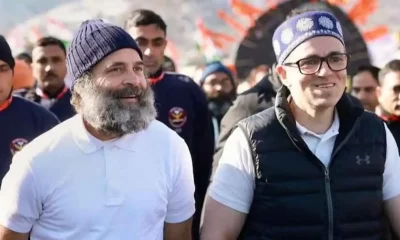
 2024 Lok Sabha Elections13 hours ago
2024 Lok Sabha Elections13 hours agoOmar Abdullah praises Rahul Gandhi’s fight in Lok Sabha elections, says Gandhi is giving a direct fight to PM Modi
-
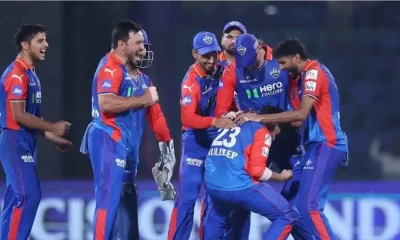
 Cricket news15 hours ago
Cricket news15 hours agoDelhi Capitals beat Rajasthan Royals by 20 runs
-
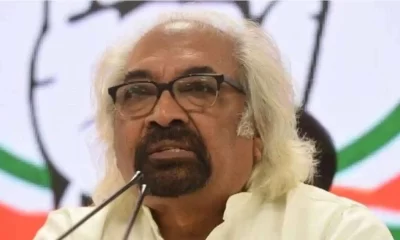
 2024 Lok Sabha Elections10 hours ago
2024 Lok Sabha Elections10 hours agoBJP calls Sam Pitroda’s controversial remarks racist, targets Rahul Gandhi
-
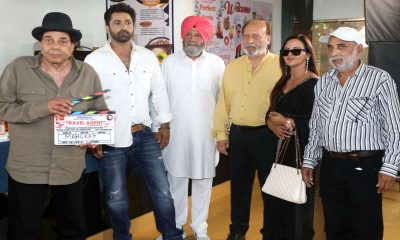
 Entertainment7 hours ago
Entertainment7 hours agoDharmendra blesses actor Sonu Baggad in debut Punjabi film Travel Agent
-
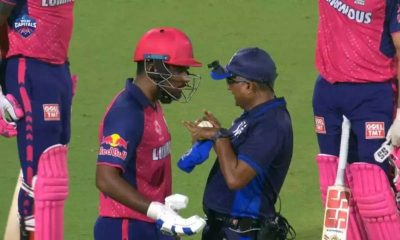
 Cricket news13 hours ago
Cricket news13 hours agoBCCI slaps heavy penalty on RR captain Sanju Samson for argument with on-field umpires
-
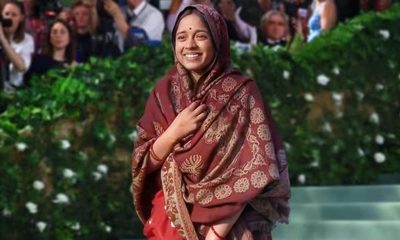
 Entertainment12 hours ago
Entertainment12 hours agoLaapataa Ladies actor Nitanshi Goel’s edited picture from Met Gala 2024 goes viral, social media reacts
-

 India News14 hours ago
India News14 hours agoAir India Express: Over 70 flights cancelled after crew members take mass sick leaves
-
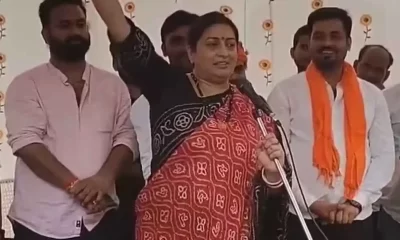
 2024 Lok Sabha Elections12 hours ago
2024 Lok Sabha Elections12 hours agoSmriti Irani slams Rahul Gandhi over former Pakistan minister’s praise for him, questions his relationship with Pakistan


